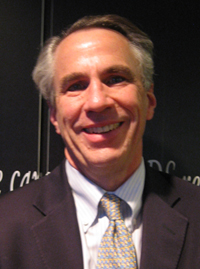
Dr. Robert SilicianoA recurring theme in HIV cure
research is the formidable barrier presented by latent HIV infection. Current
antiretroviral therapies (ART) are superb in reducing active virus growth to
undetectable levels. But there remains an extremely stable reservoir of virus—predominantly in resting memory CD4+ T cells—invulnerable to attack by these
drugs.
One strategy to overcome this
latent reservoir is to activate the latent cells, inducing active virus, which
would then be susceptible to ART. But as Dr. Robert Siliciano and colleagues,
funded by an amfAR ARCHE grant, point out in the March issue of the journal
Immunity, there is a major problem with this “shock and
kill” approach. Contrary to initial expectations, those latently infected T
cells do not die after viral activation and can continue to harbor HIV in a
latent state.
Dr. Siliciano, working at
Johns Hopkins University with colleagues from the National Taiwan University and
the Howard Hughes Medical Institute, utilized a test-tube model for HIV
reservoirs. In one of a series of experiments, they added a potent chemical
inducer of HIV growth, SAHA, to cells from HIV-positive individuals on ART. SAHA
is an FDA-approved drug used to treat a type of skin lymphoma, and it has been
tested in HIV-positive individuals for its ability to activate latent HIV. As
expected, SAHA induced HIV growth in all nine samples examined. But six days
later, the frequency of latently infected cells was no different from parallel
samples that hadn’t been activated by SAHA. Normally, an infected cell dies
after virus is produced within it. But in this case, the damage caused by
provoking HIV growth with SAHA was not sufficient to kill the cells and thereby
remove their reservoir potential.
By and large, adding CD8+
“killer” T cells (CTLs) from patients on ART—which are generally very good at
killing HIV-infected cells—didn’t help either. They were either defective in
some way or there were too few to do any damage. What did work was a vaccination
strategy. Pre-exposing those killer cells to proteins from the core of the
virus—a kind of vaccination in a Petri dish, using a Gag antigen—enabled them to
destroy SAHA-activated reservoir cells.
This is a major finding in
the field of cure research. It suggests that a combined approach—coupling the
boosting of HIV-specific immunity by vaccination with virus activation by drugs
such as SAHA—will be needed to attack latent reservoirs. The authors
appropriately concluded, “Our study strongly suggests that boosting CTL
responses through vaccination prior to virus reactivation may be essential for
eradication of HIV-1 infection.”
Dr. Laurence is amfAR’s senior scientific
consultant.